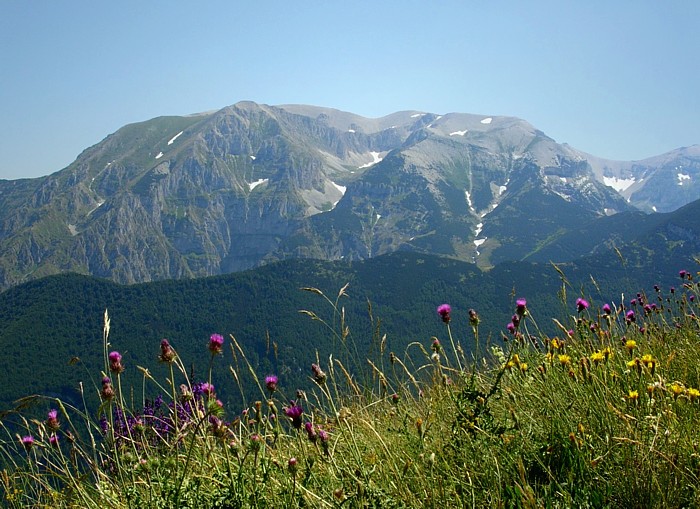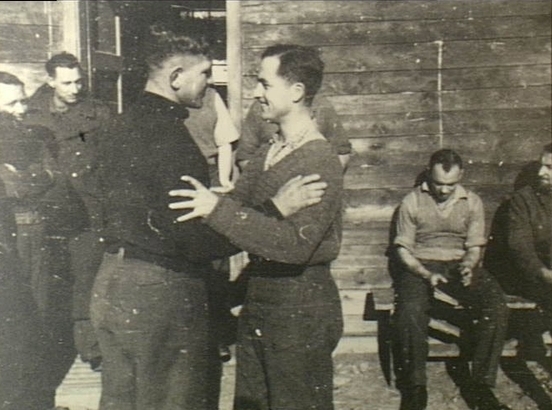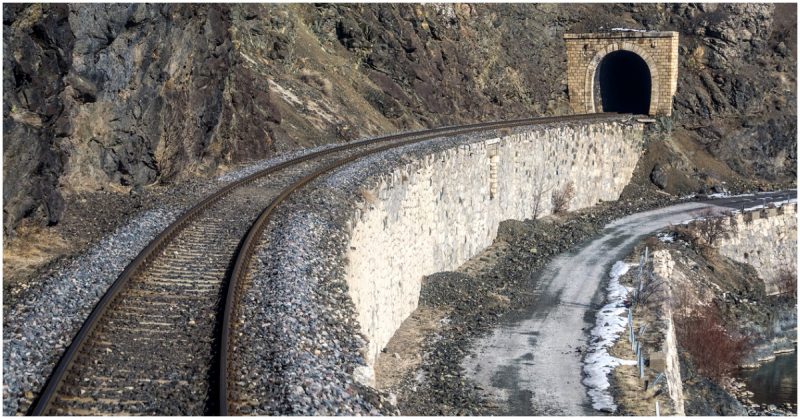Channel 4, the British public service television station, has created a new series showcasing four of the most amazing escapes undertaken by British prisoners of war during WWII. The title of the series “The Freedom Trail” refers to the trail over the Pyrenees that saw 33,000 refugees and 3,400 Allied servicemen trek to freedom in neutral Spain. These intrepid travelers climbed the equivalent of half the height of Mount Everest and battled hypothermia, exhaustion, and blizzards as they made their way over the trail. One of the episodes travels this trail and speaks to the men that walked it and the people that helped the refugees and servicemen along the trail.
One of the most heartwarming scenes in the documentary series is when Len Harley aged 98, sees Rosina Spinosa for the first time in over 70 years and gets the chance to thank her for saving his life.
Len fought in the North African desert, and after being taken prisoner there, he was transported to a prison camp in Italy. Two years later, in September 1943, after the Italians had surrendered he was liberated with hundreds of other POW’s, but they walked out of prison into the countryside that was crawling with German troops.
Len escaped the prison with his partner, Nick, and set off over the mountains to freedom. The journey was harrowing in the extreme, and at one point they stumbled onto a farm in the Peligna Valley and freezing and starving they begged help from the farmer and his daughter.
Unsurprisingly Rosina’s father had initially turned the men away as the penalty for harboring the enemy was death but she begged her father to reconsider and eventually she and her family hid the men for a long five months. The five months that the men were hidden was an ordeal for the Spinosa family as the house was raided by the Germans on a tip-off and even when two of her family members were taken as hostages by the Germans, the family did not give up the British soldiers. The risks faced by the Spinosa family could not be underestimated. Statistics show that for every British POW that made it home from Italy at least four Italian civilians lost their lives as the Germans tried to intimidate the population into giving them up.
Eventually, Len and Nick had recovered sufficiently and fearing to push their luck any longer, they made a run for the British lines by clambering over Monte Amaro a peak of 2,800 meters. He and Nick were caught in a blizzard on the summit, so they decided to drink an entire bottle of brandy that they had been given and then toboggan on their bottoms down the slopes of the mountain to take cover in the forests below. Their guardian angels were in force that day as they made it safely and arrived in the village of Fara San Martino and the protection of the British lines.

After the war, Len returned to Italy to try and find the Spinosa family so that he could thank them properly, but he could not find the family and no-one seemed to know where they had gone. In fact, they had gone to America so Len lost track of them completely until Channel 4 managed to trace the family and found that Rosina was back in Italy so they arranged the link up so Len could speak to the woman that saved his life over half a century ago.
Len is too frail to travel to Italy, so the television station arranged an electronic link, and with tears in his eyes, the elderly veteran was lost for words as the face of his savior came into focus. Rosina, surrounded by her relatives leans forward so she can see the man whose life she saved and she hid for those five long months. Len introduces Rosina to his daughter, Chris, who is standing at his side and tells Rosina that he had grandchildren today because of her bravery. Rosina modestly replies that she is just so happy to see him again.
Another of the stories covers an escape knows as The Crow’s Flight. This was the most successful mass escape of the war in which over 100 prisoners dodged the Germans through 150 miles of Slovenian occupied territory to a temporary airfield where they were picked up. The men in this escape had been protected by local partisans, and the British Government suppressed all information about the escape after the war as it placed the partisans in danger. In the post-war years, these partisans were considered communist sympathizers and regarded with suspicion. The group of POW’s was led by Private Ralph Churches, an Australian, and the amazing part of this story is that Churches had already escaped from the camp and met up with the partisans. He then persuaded the partisans to return to the camp and free as many POW’s as they could. The group that was eventually liberated trekked through mountains that were home to wild animals such as bears and wolves, all the while relying on local partisans to keep them safe. The Germans dogged their footsteps every step of the way until the group was eventually airlifted to safety.

Another amazing story covered the escapades of a 33-man SAS patrol that were dropped behind enemy lines in December 1944, into the Apennine mountains in Italy. They were tasked with creating alarm and confusion in the German forces so that the Germans were drawn away from the Gothic Line, a heavily fortified barrier across Italy. This would facilitate the Allied advance up Italy from the south.
The SAS troops caused havoc in the area for 40 days and eventually had thousands of German soldiers pursuing them. The pursuit became so bad that they decided to withdraw to Allied lines by crossing the Apennine mountains. The documentary follows in the footsteps of this band of soldiers, relying on the testimony of one of the men, Trevor Harrold. He recounted how the SAS went past the village of Vinca, which was the scene of a horrendous massacre where 174 people including 144 women and children were shot by Italian fascist forces a few months before the SAS passed through. The SAS eventually crossed Monte Altissimo and made it safely to the British lines. This was credited as the most successful SAS mission of WWII.
The team from Channel 4 spent months tracing survivors and those that helped the survivors so that the stories could be accurately told. The documentary makers followed the footsteps of the escapees and pieced the story together as they went. Most importantly they brought together the actual POW’s, where possible, along with their descendants. This made for powerful and at times emotional television but at last many got the chance to say thank-you and show their gratitude for all the help they had been given.
These untold stories of World War II once again demonstrate the personal sacrifices made by so many during the war. The stories of the ordinary people who achieved extraordinary things by being defiant and courageous. These stories of servicemen who rose to extraordinary heights and the civilians that helped and guided them on their way make for the very best of television. One can only wonder at the resilience of the human spirit and admire the courage and compassion of so many people who simply did the right thing.
